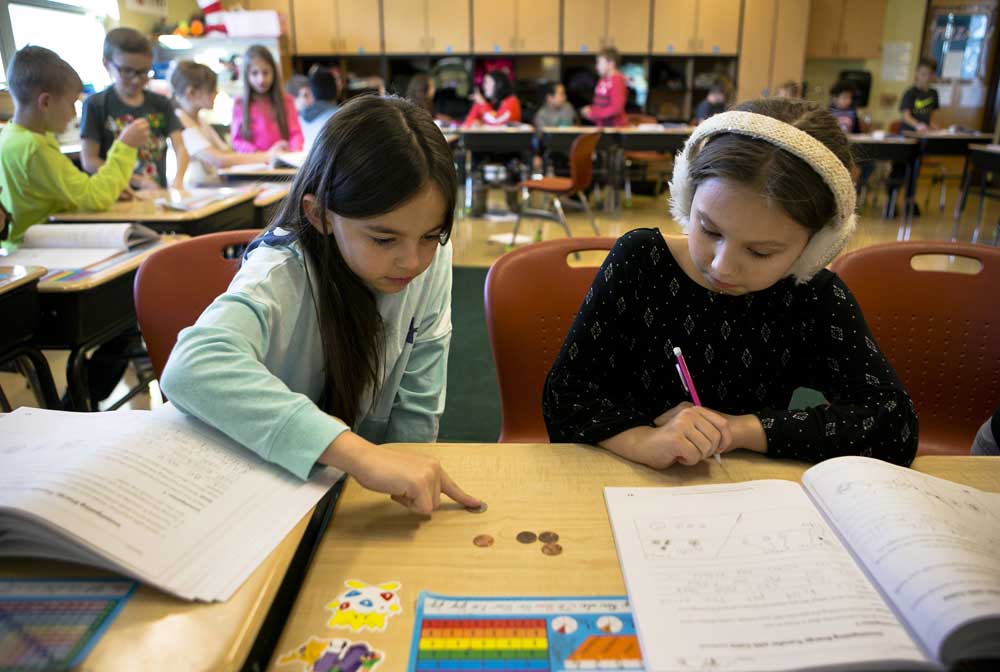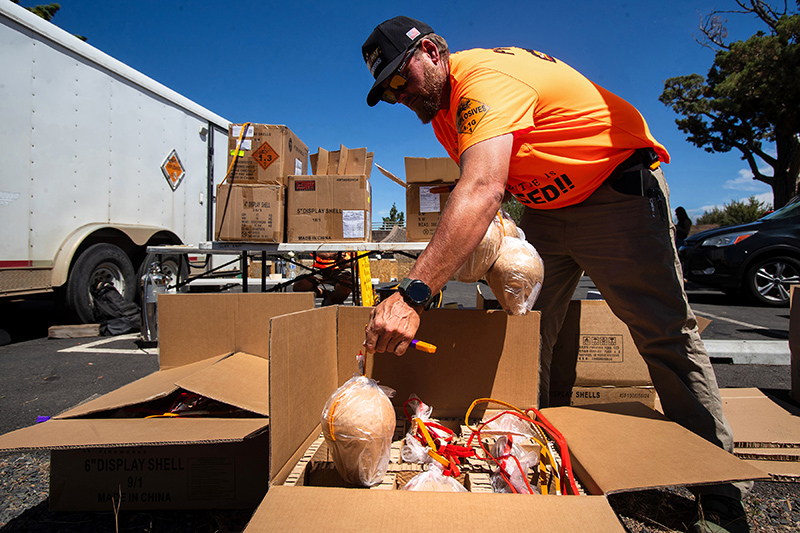Redmond schools considering new science curriculum
Published 12:00 am Tuesday, December 4, 2018

- Sage Elementary fourth-graders Bella Thompson, left, and Abby Asbell review an experiment they conducted using coins to demonstrate energy transfer during teacher Dan Guilfoy’s science class Monday in Redmond.(Joe Kline/Bulletin photo)
REDMOND — It’s a Friday afternoon, when kids are typically most restless. But in Dan Guilfoy’s fourth-grade class at Sage Elementary, his 30 students are enthusiastically trying various methods to make a penny move by not touching it, although using a nickel is allowed.
These students are learning about how energy can transferred from one object to another — such as sliding a nickel into a penny to nudge it, or pounding the desk to rattle the coins — one of the core scientific concepts fourth-graders learn in a new science curriculum called Amplify Science.
Guilfoy is one of 15 Redmond School District elementary teachers who has tested Amplify in a pilot project for the past couple years, and the Redmond School Board will decide at its Dec. 12 meeting whether to officially adopt the curriculum in every K-5 classroom starting this spring, a move that would affect nearly 3,300 students.
Linda Seeberg, executive director of academic achievement; Chris Morton, director of school improvement; and elementary instructional coach Stephanie Wilcox urged the board at its meeting last week to adopt Amplify, as the district hasn’t updated its elementary science curriculum since the 2011-12 school year.
“If you ask any elementary teacher in our district, they’d say we desperately need new science materials,” Seeberg said.
According to the trio, the district tried three new K-5 science curricula starting two years ago. Morton said one program was focused almost exclusively on hands-on experimentation, and the second was too textbook-heavy, but Amplify bridged the gap between the two extremes, while including lots of digital integration.
“Kids obviously love things that are hands-on and engaging, so we knew that had to be an important part of the work. But we also knew that had to come in conjunction with actual learning about science,” Seeberg said. “Not just experimenting for the sake of experimenting, but it had to have something with more substance.”
Seeberg said every teacher testing the three curricula preferred Amplify. She said it helped the instructors brush up on some science concepts, as elementary teachers don’t typically specialize in science. Every teacher manual comes with a large introduction to the units — each grade learns different concepts in earth, physical and life sciences — that keep science integrated with other subjects such as writing.
“The challenge for elementary teachers … is that they’re not experts in any one area because they teach all subjects,” Seeberg said. That’s where curriculum is very important.”
Wilcox said the materials focus chiefly on having students question why certain phenomena happen in the real world. For example, in their earth science unit, second-graders learn about erosion and properties of water by investigating what causes rock cliffs to change over time. Guilfoy said his students learned about sound waves through a Chromebook program, where students click on an instrument and the noise ripples through a sea of particles.
Guilfoy’s fourth-graders didn’t have a daily dedicated time for science before he began piloting Amplify in the 2016-17 school year, he said. Now, there’s 45 minutes reserved for either social studies or science.
He said Amplify, which he called “fantastic,” has made his students more curious about how the world works.
“I think even as adults, we don’t think about how sound travels, why you hear thunder at a different time as you see lightning,” he said. “I think (this curriculum) opens up their eyes to things that are going around us that they might not always consider.”
Redmond wouldn’t be alone in using Amplify — Seeberg told the school board that two of Oregon’s largest districts, Hillsboro and Bend-La Pine, recently adopted the curriculum.
Third-grade teachers Margy Tucker and Alisha Clawson, who both teach in northeast Bend’s Buckingham Elementary School, said Amplify has prepared their students for not only future science classes in middle and high school, but also for potential careers in science and engineering.
“The kids seem really engaged; they’ve had lots of exposure to different types of science,” Clawson said.
Some of the simplest praise for the curriculum comes from students in Guilfoy’s class.
“It’s been really fun so far,” said Seraph Homann, 9.
“I like that we get to do a ton of activities,” Ariana Fodor, 9, chimed in.
Seraph said he’s starting to become interested in a future career in chemistry, while Ariana said her new science lessons have made her more curious about the world around her.
“I’ve been questioning particles, like, why are they so tiny? How tiny are they?” she said. “All I know is that you can’t see them.”
This piqued interest in science seems to fit what Wilcox said she hoped for Redmond’s new science curriculum: “We wanted to make sure the science wasn’t happening to the students, but the students were so engaged that they were seeking out the science.”
— Reporter: 541-617-7854, jhogan@bendbulletin.com








